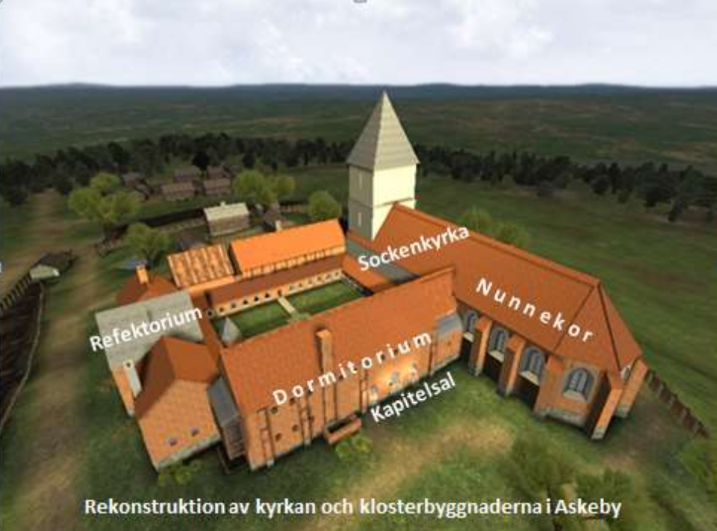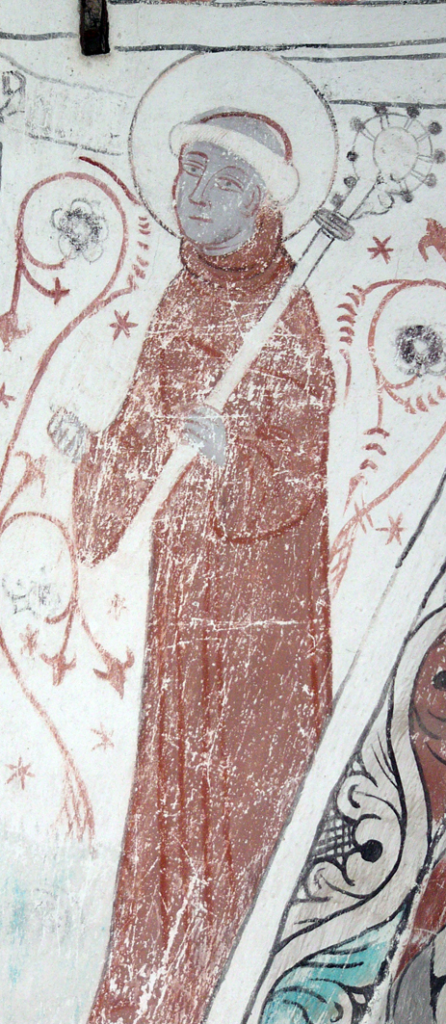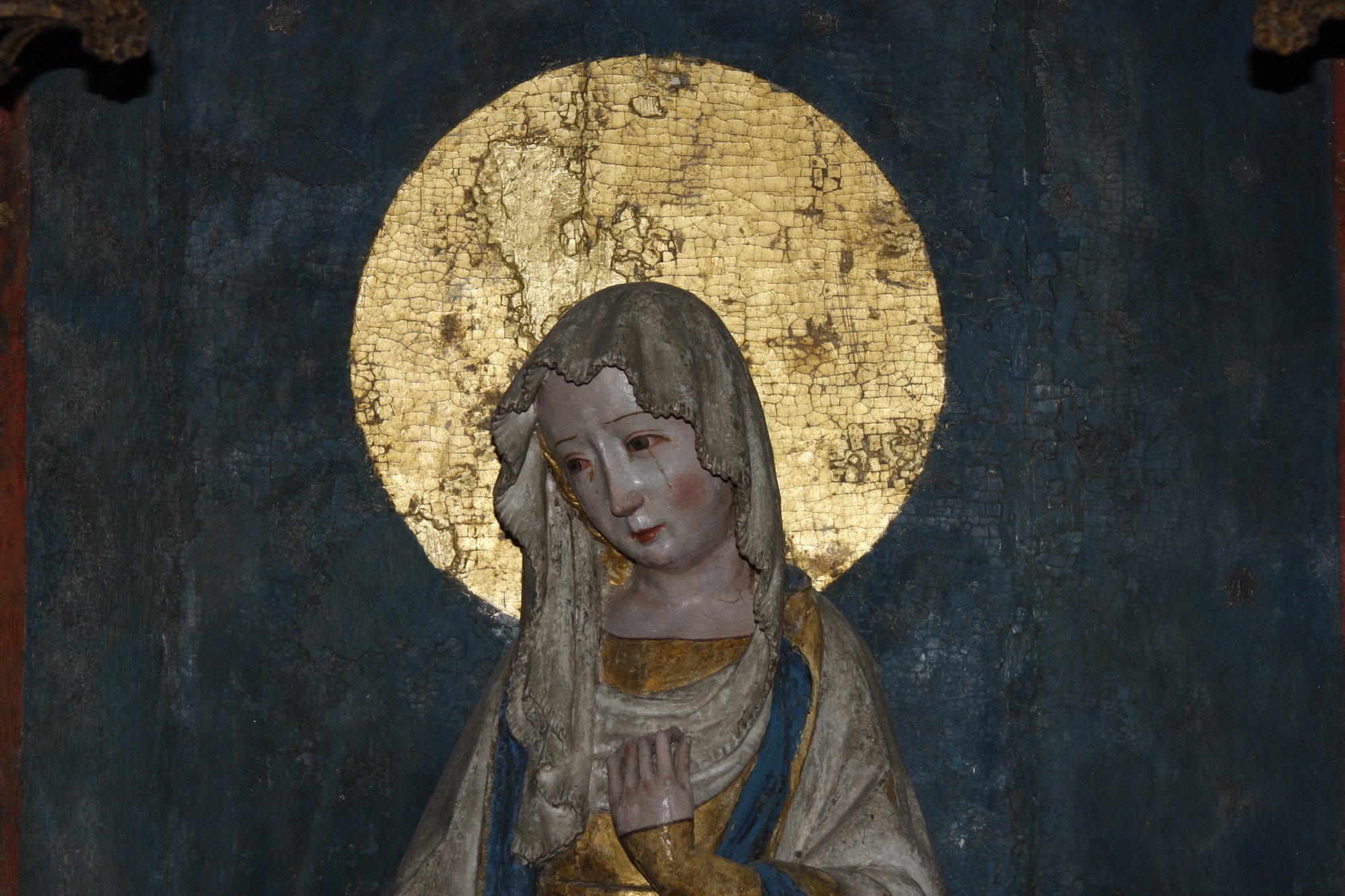Askeby convent was first mentioned in the 1160s in association with a large donation initiated by King Karl Sverkersson. It is considered to be a Cistercian abbey, but since the pope did not authorize convents before 1212 within this order, it must have belonged to the Benedictines before that year.

The differences were not so big, because the Cistercian order had towards the end of the 11th century started as a reform movement within the Benedictines, and lived as they, according to the monastery rule of Saint Benedict.

During the 12th century, the monastic movement grew with an immense force. Several hundred convents gradually joined the Cistercian order. Most of them were indirectly subordinate the parent monastery of Clairvaux in eastern France, which was founded by Bernhard, an abbot who was one of the most dynamic, charismatic and influential men during the 12th century. He died in 1153.
The key words for the Cistercians may be; isolation from the outside world, simplicity, the centralized organization, the uniformity in edifice, and liturgy. Askeby abbey was built in conjunction to an existing church that was built during the 1130s-40s as a King’s Church, and was probably completed during the first part of the 13th century.
In 1377, the abbey was exposed to a devastating fire that in a way meant a new beginning. A new abbey church was founded as the convent was reconstructed according to the ideals of the 15th century. The number of nuns increased from twelve to twenty. The use of the convent came to a definite end in 1529.
Kjell O. Lejon depicts in his book, Askeby kloster – om klostertid och klosterliv (Askeby Abbey – Monastic Days and Life), the abbey history from a religious-historical point of view.
